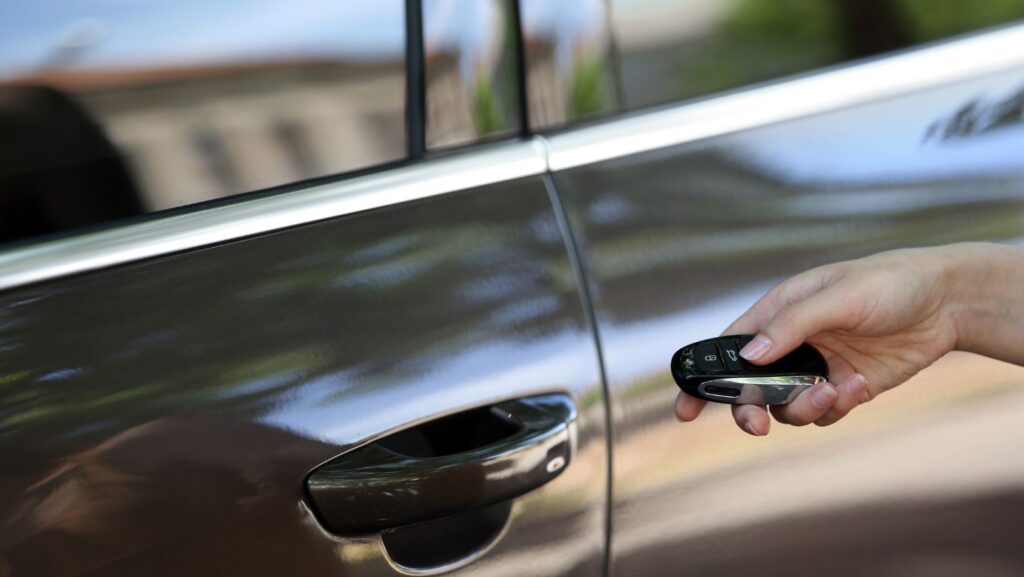RC (Remote Control) cars have evolved from simple toys to highly sophisticated machines capable of performing incredible feats. From small, indoor vehicles to high-powered, off-road racers, the technology behind these miniature vehicles is more complex than many people realize. Whether you are a casual hobbyist or a competitive racer, understanding the engineering behind RC cars can help you appreciate the precision and innovation that go into creating these high-performance machines. This article will explore the key components and technologies that power RC cars, revealing what makes them tick.
1. The RC Car’s Core System: Communication and Control
The central element of any RC car is the communication system that links the user’s remote control to the vehicle itself. This system uses radio frequencies to transmit control signals, ensuring the car moves exactly as commanded.
- Transmitter (Controller): The transmitter is the device that the user holds to control the RC car. It sends signals to the car’s receiver, directing it to move forward, backward, or turn left and right. Transmitters typically operate on specific frequencies (e.g., 2.4 GHz), allowing multiple users to race without interfering with each other’s signals. Modern controllers often include features like adjustable steering sensitivity, throttle control, and, in advanced models, telemetry feedback to monitor the car’s performance.
- Receiver (Car Unit): Located inside the car, the receiver interprets the signals sent from the transmitter and sends these instructions to the relevant parts of the vehicle, such as the motor, servos, and speed controllers. The receiver ensures smooth and precise control over the vehicle’s actions.
2. Power Source: Electric or Gasoline
RC cars are powered by either electric motors or internal combustion engines. The choice of power source depends on the type of RC car and the user’s preference.
- Electric RC Cars: These cars are powered by rechargeable batteries, typically lithium-polymer (LiPo) or nickel-metal hydride (NiMH). Electric vehicles are popular due to their simplicity, ease of use, and lower maintenance requirements. The battery powers the motor, which drives the car’s wheels, and the electronics, such as the servos and receiver. Electric RC cars are also quieter, cleaner, and easier to maintain than their gas counterparts, making them perfect for beginners or indoor use. For those looking for quality batteries and accessories, consider visiting RCvisions RC shop to find top-tier options to enhance your car’s performance.
- Gas-Powered RC Cars: These cars use small internal combustion engines (usually two-stroke) to generate power. The engine runs on a mixture of gasoline and oil, and this setup is typical for larger, more powerful RC vehicles. Gasoline-powered cars offer better performance, higher speeds, and longer run timesthano their electric counterparts, but they require more maintenance and are usually more expensive.
3. Precision in Movement: The Role of Servos
Servos are essential components that allow RC cars to respond to user commands. They control both the steering and the throttle.

Servos convert electrical signals into mechanical movement, enabling thevehicler to steer and accelerate.
- Steering Servo: The steering servo controls the front wheels of the car. When the user turns the steering wheel on the transmitter, the servo adjusts the wheels accordingly. This precision is critical for navigating tight turns or performing stunts. High-end RC cars may have more advanced servos, allowing faster response times and greater control.
- Throttle Servo: For electric RC cars, the throttle is controlled by an electronic speed controller (ESC), which regulates the flow of electricity to the motor, controlling the car’s speed. Gas-powered RC cars, on the other hand, use a throttle servo to control the flow of fuel to the engine, thereby adjusting the car’s speed. The servo must be calibrated for optimal response, ensuring smooth acceleration and braking.
4. Chassis and Suspension: Stability on Any Terrain
The chassis forms the frame of the RC car, providing support for the motor, servos, wheels, and electronics. A lightweight yet durable chassis is crucial for achieving high speeds and excellent handling.
- Chassis Design: The material used in the chassis can vary. Plastic and aluminum are standard, though carbon fiber is increasingly popular for high-end models due to its lightweight yet powerful properties. The chassis must be rigid enough to withstand the forces exerted on the car during acceleration, turning, and impact.
- Suspension System: The suspension is vital in ensuring the car remains stable over uneven terrain. Advanced RC cars have shock absorbers and springs that help cushion the impact from jumps, rough surfaces, and high-speed turns. Adjustable suspension systems allow drivers to fine-tune the handling of their cars based on the type of terrain or track conditions.
5. Speed Control and Power Management
The Electronic Speed Controller (ESC) is one of the most essential parts of an electric RC car. It acts as the bridge between the car’s motor and its power source, controlling the flow of electricity from the battery to the motor.
- ESC Features: The ESC can be programmed to adjust various parameters, such as acceleration curves, brake response, and motor timing, which allows users to fine-tune their car’s performance for specific driving conditions. A high-quality ESC ensures that power is delivered smoothly, reducing the risk of sudden surges that could destabilize the vehicle.
- Battery Management: The type of battery used in an RC car significantly affects its performance. LiPo batteries are widely used in modern RC cars due to their lightweight and high-power output.

They provide longer run times but require careful monitoring to prevent overcharging or discharging, which can damage the cells or cause safety hazards.
6. The Evolution of RC Car Technology: A Glimpse into the Future
The RC car industry has come a long way, and the future looks even more exciting. With advances in GPS technology, smartphone integration, and autonomous control, future RC cars may offer new performance levels and user experience.
- GPS and Telemetry: Some high-end RC cars already have GPS tracking systems, allowing users to track their car’s speed, location, and other performance metrics in real-time. This technology is increasingly used in competitive racing, giving drivers real-time feedback on their lap times and car settings.
- Autonomous RC Cars: While still in its infancy, the development of autonomous RC cars that can navigate tracks or obstacles without direct human control is on the horizon. Using technologies like machine learning and sensor fusion, these cars could one day compete in fully autonomous races.
Conclusion
RC cars are far more than just toys; they are a testament to modern engineering and innovation. By understanding the intricate systems that power these machines—from the communication systems and power sources to the servos and suspension systems—enthusiasts can better appreciate the level of technology involved. As the hobby continues to evolve, we can expect even more exciting developments in RC car technology, making this hobby an ever-growing frontier of fun and performance.



